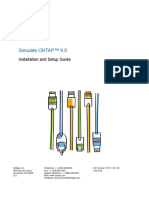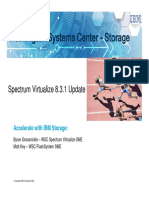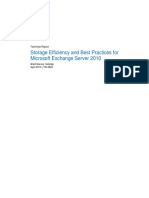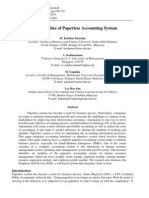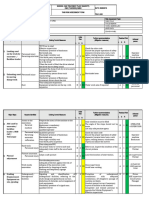0% found this document useful (0 votes)
105 views91 pagesLinux Perf Tuning 2010 1up
This document provides an overview of an upcoming Linux performance tuning tutorial. It outlines the agenda and logistics of the full-day event. The introduction discusses the complexity of performance tuning and the goals of identifying bottlenecks and incrementally tuning systems. Basic tools like free, top, and iostat are introduced to help understand resource usage and identify potential problems. The document provides examples of using these tools and questions to consider when analyzing the output. It also demonstrates how profiling an application can reveal optimization opportunities.
Uploaded by
FranckCopyright
© © All Rights Reserved
We take content rights seriously. If you suspect this is your content, claim it here.
Available Formats
Download as PDF, TXT or read online on Scribd
0% found this document useful (0 votes)
105 views91 pagesLinux Perf Tuning 2010 1up
This document provides an overview of an upcoming Linux performance tuning tutorial. It outlines the agenda and logistics of the full-day event. The introduction discusses the complexity of performance tuning and the goals of identifying bottlenecks and incrementally tuning systems. Basic tools like free, top, and iostat are introduced to help understand resource usage and identify potential problems. The document provides examples of using these tools and questions to consider when analyzing the output. It also demonstrates how profiling an application can reveal optimization opportunities.
Uploaded by
FranckCopyright
© © All Rights Reserved
We take content rights seriously. If you suspect this is your content, claim it here.
Available Formats
Download as PDF, TXT or read online on Scribd
/ 91













